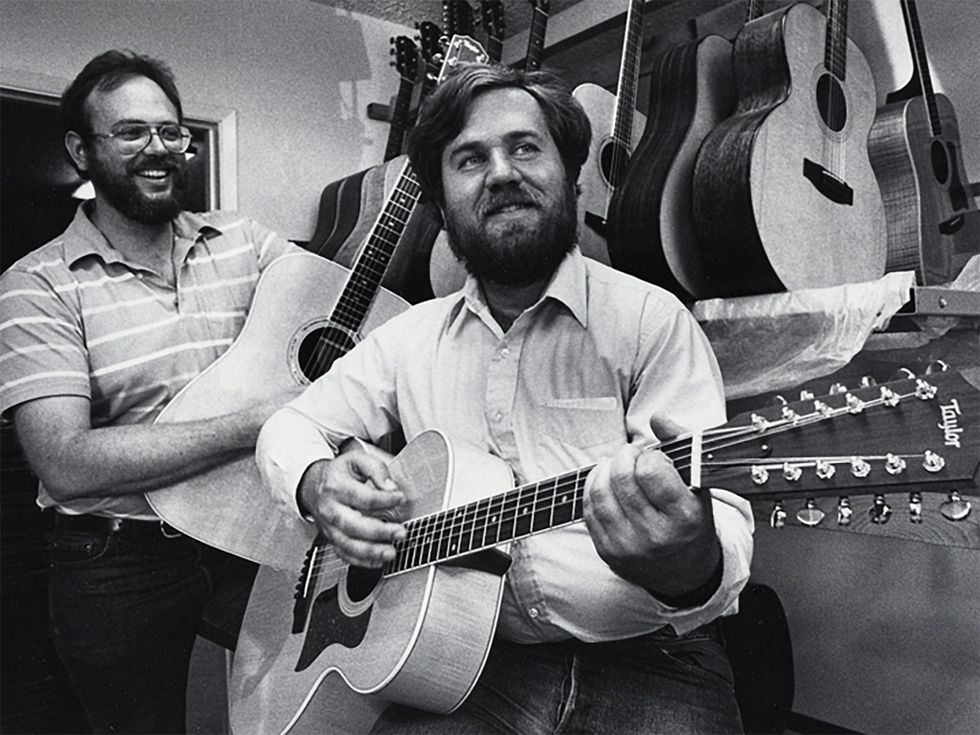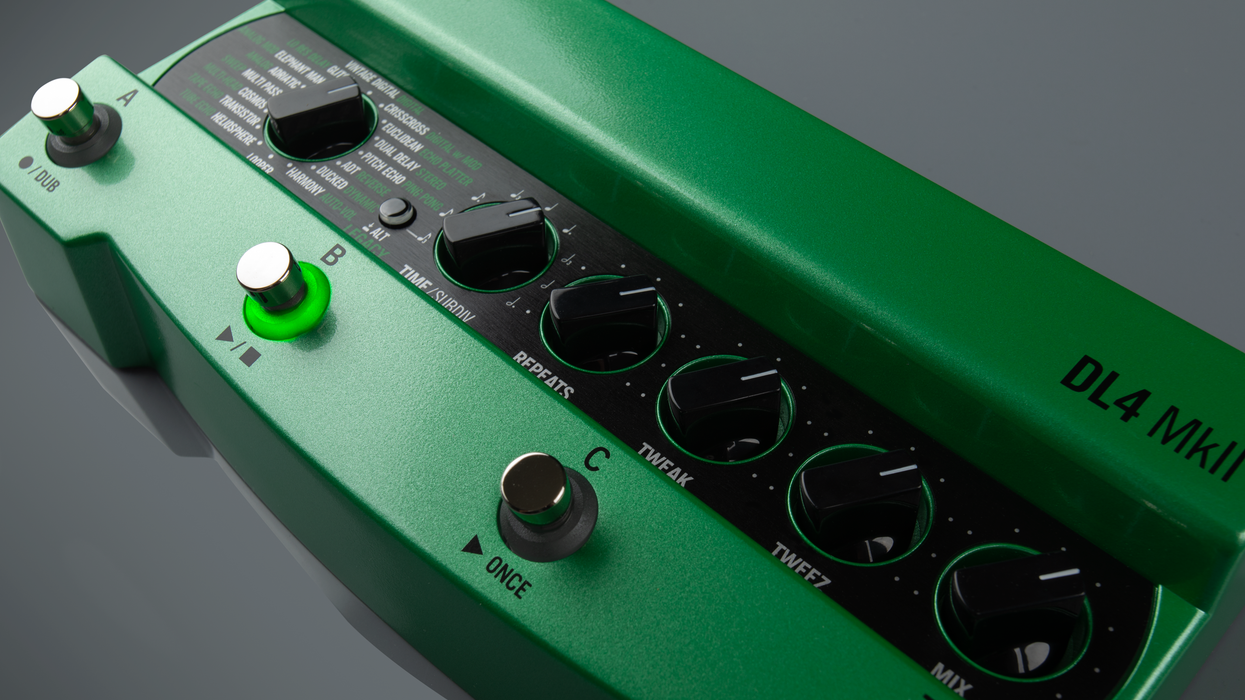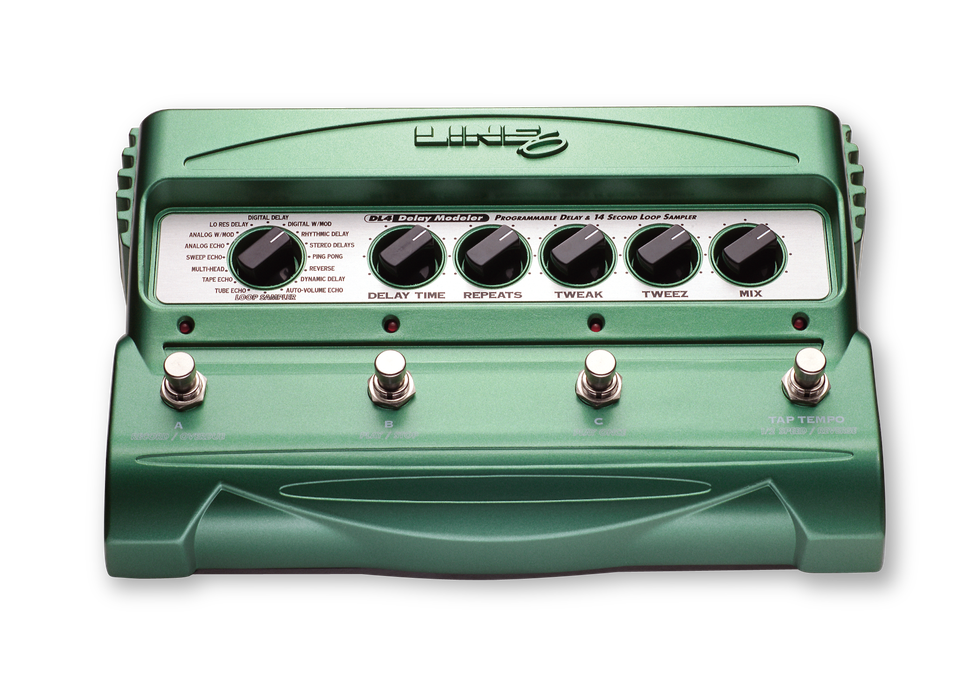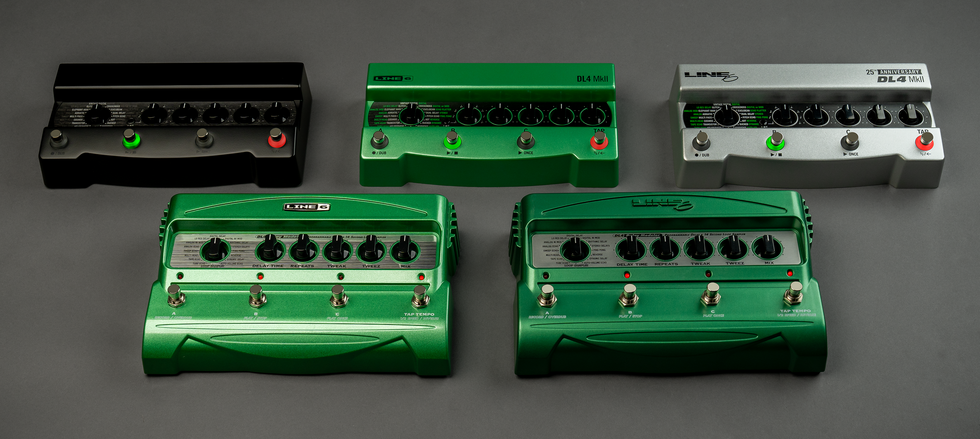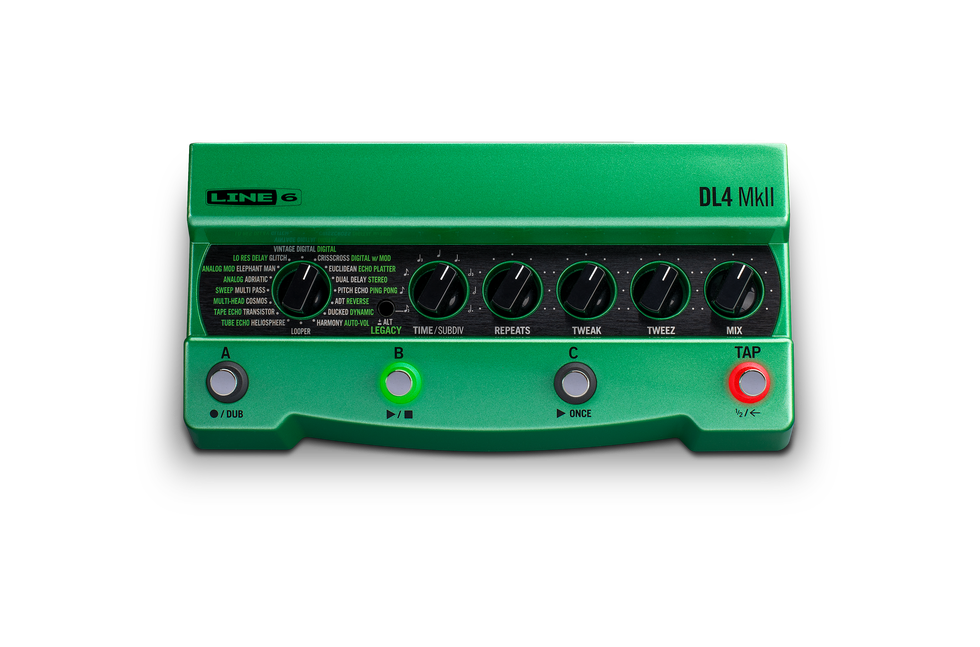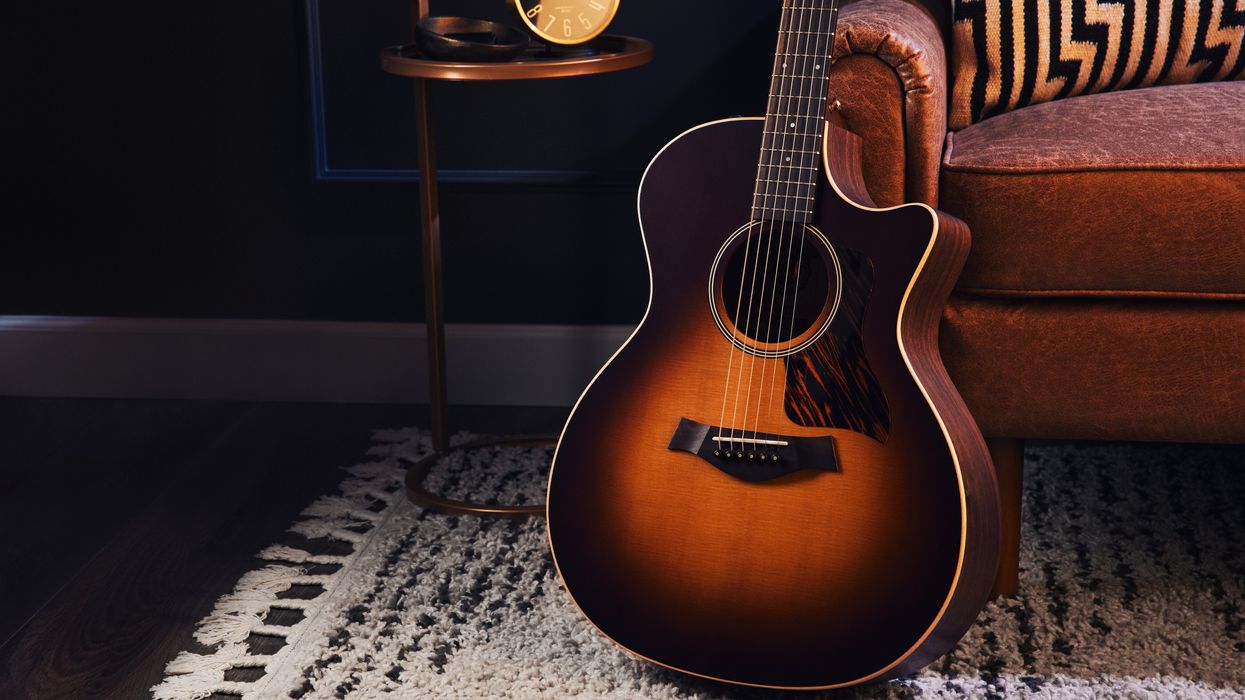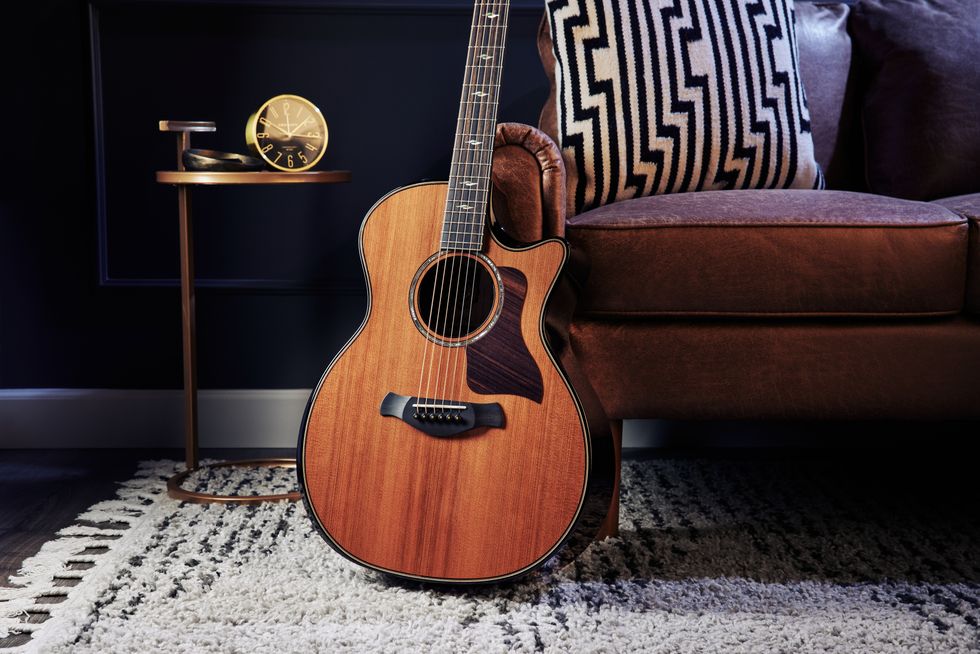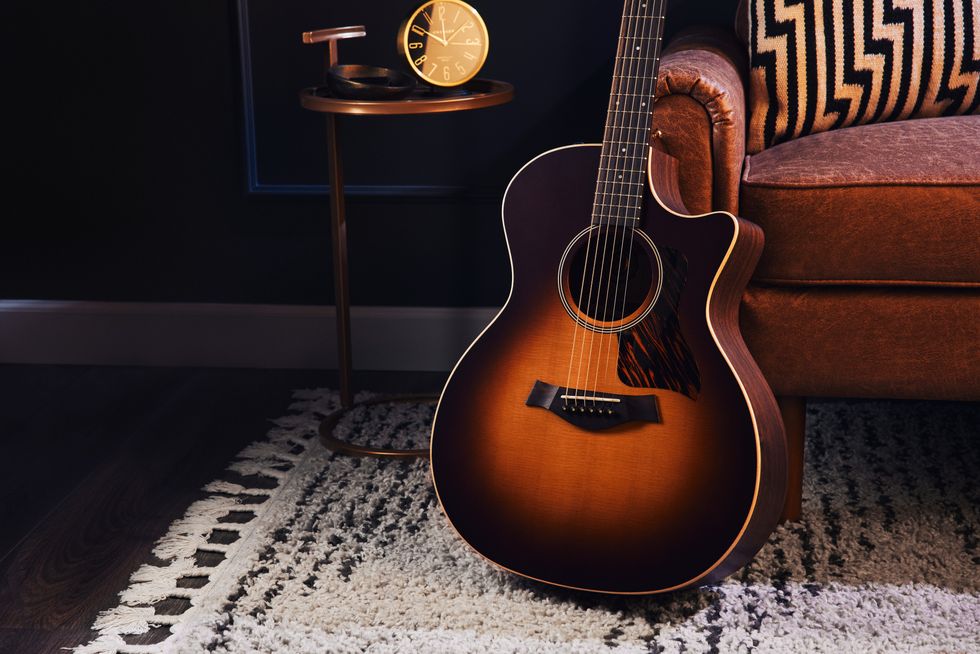Seldom before has an innocent-looking pedal offered such devilish delights.
Combining a ferocious fuzz circuit with remarkably powerful pitch-shifting capabilities, Keeley’s new Octa Psi pedal makes it easy to blow your mind … and have a ton of fun in the process.
It’s capable of creating pleasing and/or demented intervals, subtle harmonizing, expansive octaves up and down, and swooping pitch changes—all turbocharged by one of the gnarliest fuzzes this side of Armageddon.
Simply Psychoactive ... By Intent
If you’ve ever craved a user-friendly freakout, this is it. With just five knobs, two 3-way toggle switches, and a pair of footswitches—as well as an expression pedal input—the Octa Psi presents a comfortable, inviting portal to a universe of crazy sonic exploration.
That’s exactly what Robert Keeley intended from the moment he started designing the Octa Psi.
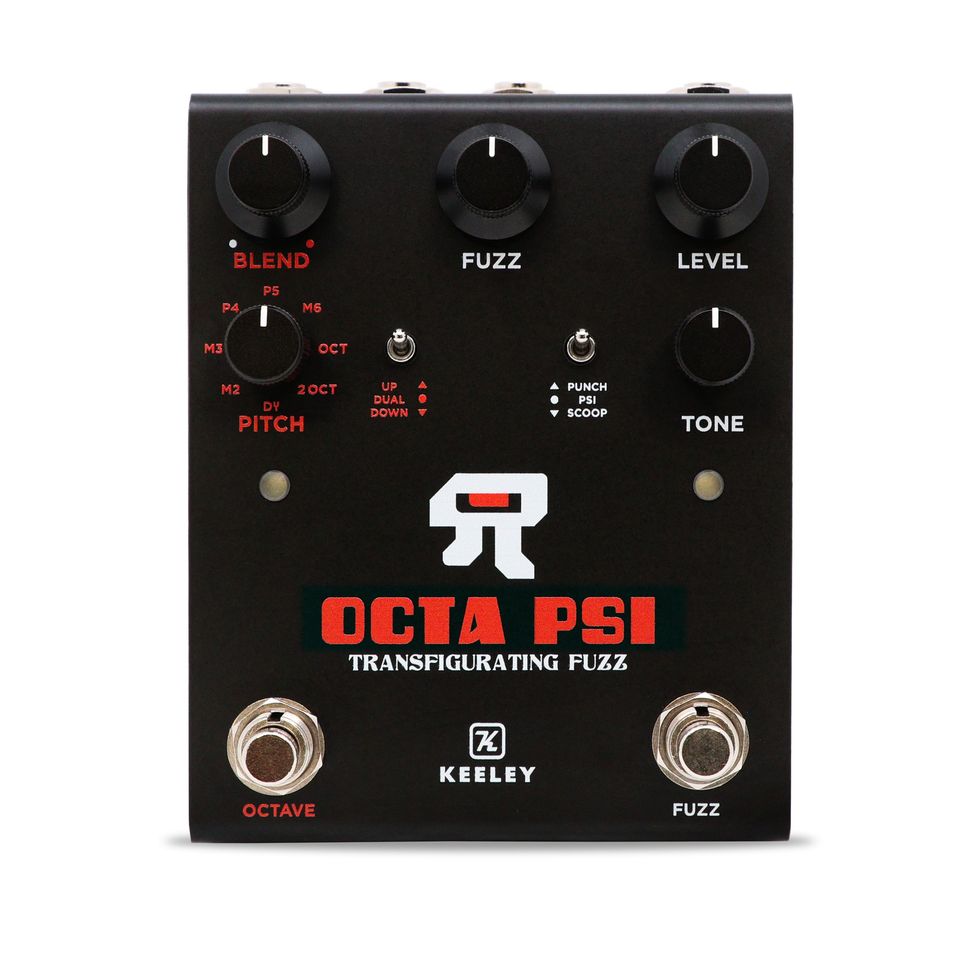
“The finished pedal is true to the original idea that I had in November 2021,” Keeley says. “I wanted it to have a high-gain vintage Muff, all-analog and all-transistor, going into an octave pitch shifter—something in the neighborhood of a Pitch Fork or POG. And then when I added the expression pedal function, it could resemble a whammy.”
Ah yes, the expression pedal input. Linking the Octa Psi with a standard expression pedal opens the door to a whole new dimension of pitch shifting mayhem. Rest assured, you don’t have to use an expression pedal to derive crazy fun from the Octa Psi. But it sure helps.
With all of the pedal’s deep functionality, Keeley felt that simplicity would be a key factor in broadening its appeal, starting with this elemental item: “From the get-go I wanted it to have order switching, allowing the fuzz feeding the pitch shifter or vice versa, because it gives you two distinctly different sounds if you have pitch going before or after the fuzz. And it had to be pretty effortless for the player to switch the order on the fly. And I wanted it to be easy to switch between using it either as a harmonizer or as an all-wet octave-down thing.” That desire for ease-of-use, even in the middle of a live gig, drove the design of the pedal’s controls and functions.
“I wanted to come up with something that Jack White, Steve Vai, or Frank Zappa would have fun with.”
It Ain't Easy to Create Easiness
The Octa Psi exemplifies an old adage: Sometimes a simple solution can be the most difficult to achieve. “I knew this was going to be a challenging project,” Keeley admits. “It’s very tough to combine a high-gain, full-analog distortion with a DSP [digital signal processing] section in one box. It took a long time to get the switching just right. It was particularly difficult because the Octa Psi’s analog and DSP sections are so intimately entwined. You can’t have gaps in the audio when you’re switching back and forth. Those kinds of complications drove us crazy.
“We also addressed a lot of issues that have raised concerns about other products on the market. The Octa Psi is a true-bypass pitch shifter, and it has our killer buffer system as well. There’s nothing else out there like this, so we had to figure it all out for ourselves.“
An essential challenge: voicing the fuzz so that it would sound great as a standalone effect, while also playing nicely with the Octa Psi’s harmonizer functions. “You would think that the fuzz was easy, but it was actually one of the last things we ironed out,” Keeley notes. “I had to ask myself, ‘Do I want this to be a bass-y fuzz?’ Probably not, since the pitch shifter can add octave down. But it’s got to be an amazing sounding fuzz if I want people to consider buying it. It has to sound great when compared to any Big Muff, and it has to effortlessly pair with a DSP section. So, getting the fuzz just right turned out to be the hardest part!”
The pedal design process also encountered some last-minute wrinkles. “The ramping and momentary switching capability was the last big feature that was added. That ramping function is like having an onboard expression pedal. We talked about it in the beginning of the process with Sarah Lipstate [also known as the artist Noveller], when Aaron Pierce [a key member on the Keeley team] was working on the initial concept. Later, Michael Kaye—the guitar tech for Pete Townsend and Trey Anastasio—asked, ‘Does it have momentary switching?’ and I was like, ‘Oh crap, I forgot about that!’” Keeley laughs.
The How-To Guide for Octa Psi's Hidden Features
For all of its readily accessible capabilities, the Octa Psi boasts several essential features that can only be accessed by using more than a single knob or switch. To unlock these features, it helps to have a few simple, specific instructions. For this reason, Keeley has included a brisk, handy primer on the back of each pedal. The Octa Psi’s key “hidden features” include:
- EFFECT ORDER: You can instantly switch the effect order by simultaneously holding the octave and fuzz footswitches.
- WET/DRY SELECTION: Double-click the blend control knob for switching between wet/dry blending or wet-only.
- MOMENTARY/LATCHING OPTION: Press and hold the fuzz footswitch to choose between momentary or latching operation. This is crucial if you plan on using the Octa Psi’s adventurous pitch shift ramping capability: the output signal begins with the initial note(s) you’re playing, and then veers up or down to the effected pitch. The ramp speed—i.e. how quickly this veering effect lasts—is controlled by….
- RAMP SPEED: If you’re using pitch shifting in the momentary mode, you can adjust the ramp speed by pressing and holding the octave footswitch down, then adjusting the blend knob control.
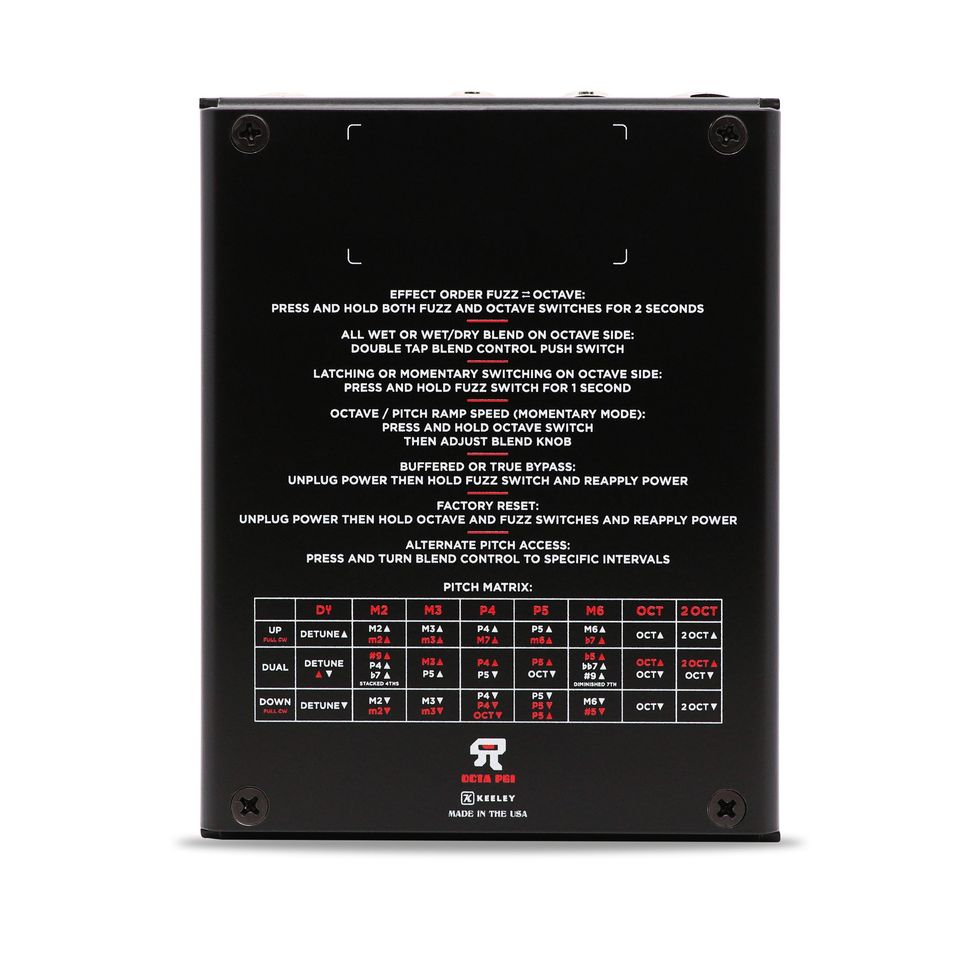
Part of an Ongoing Evolution
The Octa Psi underscores the continuing evolution of Keeley’s product line. In particular, it benefits from a pair of preceding Keeley devices: the I Get Around Rotary Simulator pedal and California Girls Twelve String Simulator—two pedals that were released in summer 2024 as exclusive offerings for the U.S. retailer Sweetwater, timed to coincide with The Beach Boys documentary on Disney+.
“That Beach Boys project did so much to help the DSP side of the Octa Psi,” says Keeley. “I got audio analyzers in so I could study the signals. We found out that we had to make our power supplies better because of the Beach Boys pedals, and that revolutionized our design. Everything that comes out since the Beach Boys pedals is going to sound even better. Plus, it was a lot of fun working with Sweetwater and JHS Pedals.”
Interestingly, for the Octa Psi project, the Keeley design team did not rely on much input from the company’s long list of affiliated artists. “I didn’t really have an artist that is a pitch/fuzz guru, so I had to keep it pretty much to ourselves. I knew that it had to be very musical—as musical as we could get it. And thankfully we have a team that can make this happen.”
The Keeley product development squad includes electrical engineer Craighton Hale, programmer Aaron Tackett, and Aaron Pierce—the “golden ears” member of the design group who helps analyze the sounds. “I’m just one part of the team of engineers that help make the products come to life,” Keeley notes.
Fun for Everyone
In the end, Keeley hopes that the Octa Psi pedal finds new and unconventional uses in the real world. “I wanted to come up with something that Jack White, Steve Vai, or Frank Zappa would have fun with—something that does all the crazy pitch-shifting with a purpose. And I’m hoping that musicians of all types will be attracted to this. People who want to distort their drums or bass or synth, and then start taking advantage of the pitch shifting. It’s almost like you get a great fuzz with the pitch shifter for free. On the other hand, I wouldn’t be surprised if some people use just the pitch shifter, if they’re not a fuzz maniac. You can get a lot of fun out of it without an expression pedal.”
Whether you’re a brazen sonic adventurer, or simply looking for a great-sounding dual function fuzz/harmonizer pedal, the Octa Psi offers a galaxy of tones for your arsenal.
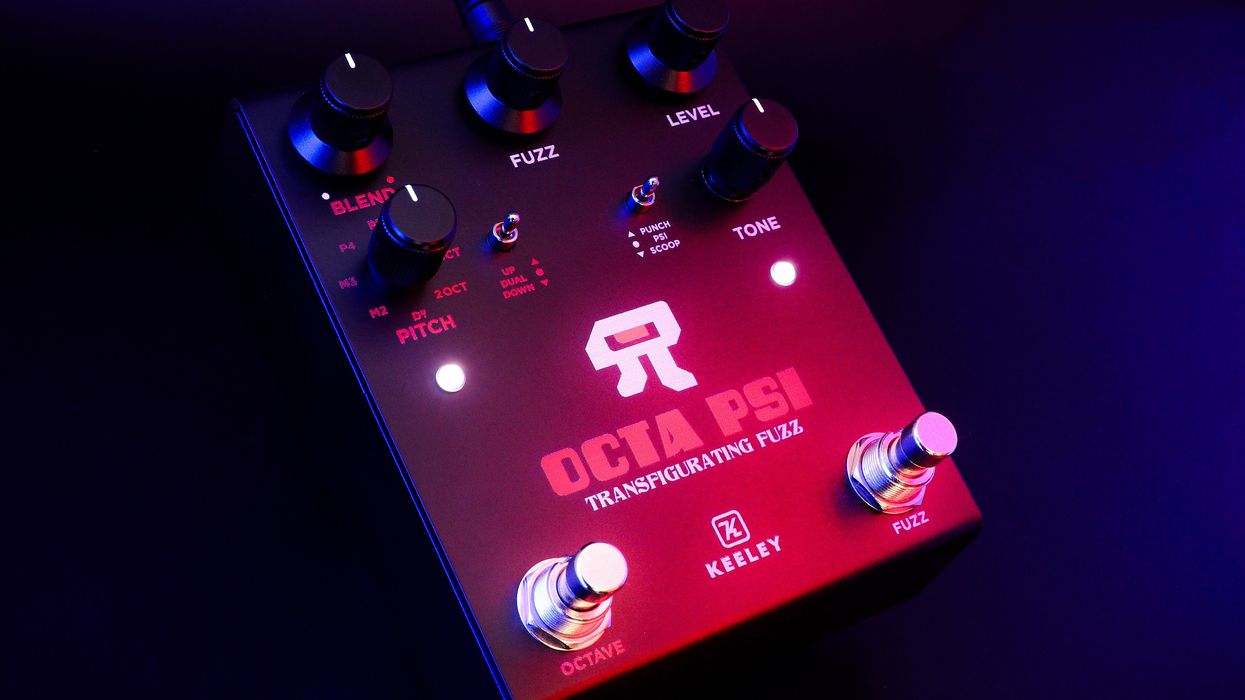





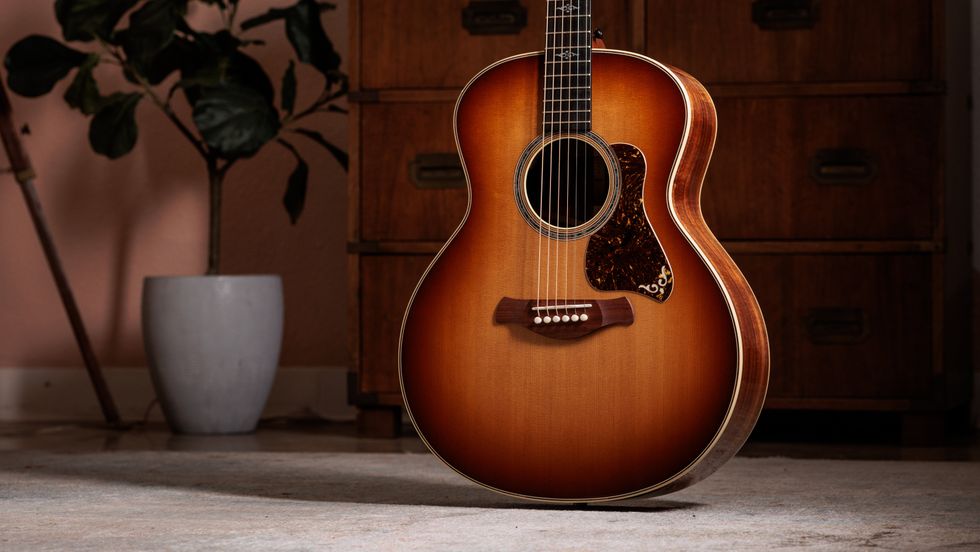

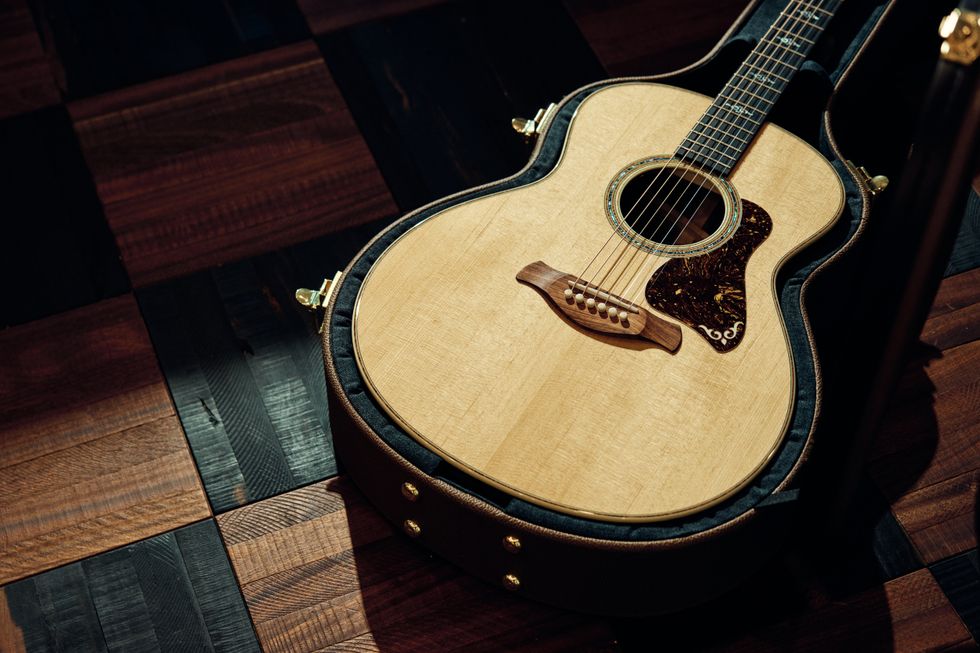




![Rig Rundown: AFI [2025]](https://www.premierguitar.com/media-library/youtube.jpg?id=62064741&width=1245&height=700&quality=70&coordinates=0%2C0%2C0%2C0)




